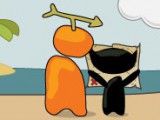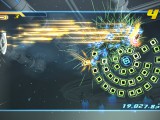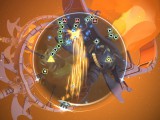Steam Treasures: Shatter
 The Great Steam Treasure Hunt, a large-scale metagaming event organized by Valve this holiday season, has had Steam users complete objectives every two days in order to win games from the Steam store catalogue. Tasks have ranged from using various community features to completing specific in-game achievements in discounted games.
The Great Steam Treasure Hunt, a large-scale metagaming event organized by Valve this holiday season, has had Steam users complete objectives every two days in order to win games from the Steam store catalogue. Tasks have ranged from using various community features to completing specific in-game achievements in discounted games.
That moaning sound in the background? That’s just the good ladies and gentlemen from Impulse, GamersGate and Direct2Drive sighing audibly – the Treasure Hunt has been a devilishly good move from Valve to get more players introduced to Steam’s lesser-utilized features. It has also turned out to be an excellent opportunity for highlighting many smaller titles from developers that may not always have the marketing muscle to stand out from the admittedly crowded Steam storefront. Indeed, the Hunt has been a time to shine for games such as Bob Came in Pieces, Beat Hazard, Droplitz, The UnderGarden and Chime.
Another such game is the aptly titled Shatter from New Zealander niche developer Sidhe. Originally released on the PSN, Shatter is on the surface a high-definition rendition of the Breakout genre, perhaps resembling most closely the classic Arkanoid. Shatter’s claim to the throne, then, is its frustration-free flavour; where other games of the genre may have traditionally strained players with punishing difficulty, Sidhe have altogether subverted the problem by introducing a mischievous sucking/blowing mechanism for your bat, used not only for gathering shattered energy fragments that dissipate from broken bricks, but also allowing players to gently guide their ball’s trajectory curve both left and right.
This intriguing mechanism lends itself to precision play and thus very much eliminates the usual annoyance of not being able to hit your very last remaining brick for prolonged periods of time. In a further twist, the sucking/blowing mechanism applies not only to your balls and fragments, but also loose bricks and other debri. This is especially important in levels with hazardous gravity and bricks in patterns that move around. Bricks in the levels – seemingly forming parts of a larger machine – often have specific functions as joints, motors or even explosives. End-level bosses (and bonus levels, too) change the pace somewhat, requiring a specific, if often straightforwarded, tactic to beat. The player’s bat comes coupled with a powerful “shard storm” attack that is especially useful for handling boss fights.
In terms of its overall difficulty, Shatter is highly adaptive: Players doing poorly will discover 1-ups a plenty, yet see none during a superlative run through the game. In fact, it is largely up to the player to juggle risk and reward: One can take a cautious approach, spending ample time but in turn losing the highest of scores, or choosing to launch arrays of multiballs in the hopes of score multipliers and faster completion. In an unfortunate move, Valve actually incorporated the game into the Treasure Hunt with a rather difficult task related to the game’s undemonstrative Bonus Mode, “not one that [sidhe] would have chosen and definitely the weakest in the game.”
Shatter’s candy-coated graphical psychedelia is reminiscent of the neon and glitter often associated with the Japanese arcade scene. The only real downside to the graphical fireworks is the loss of readability, an unfortunate but compulsory trade-in with Sidhe’s chosen style. In fact, the most typical cause of losing a life is simply not being able to properly discern the fast-moving balls beneath all the debri and effect work. Important objects like power-ups can similarly either drown balls or be drowned out themselves by the full-on visual assault.
Despite its PSN heritage, Shatter has been ported very well and plays much like a true PC game, taking advantage of Steam’s achievement support and even co-operative play, in addition to a neat selection of other gameplay modes. As a minor blemish, however, the game’s leaderboards seem plagued by blatant cheaters sporting impossible scores. Minor environmental glitches at the very edges of the game’s bottled-up levels can also occur, usually not resulting in anything worse than a lost ball or two however.
Last but not least, cute robots:
Cute robots?! Above, you can view the rad music video to the track “Amethyst Caverns” from the game’s award-winning soundtrack – currently on sale at 50% off at Bandcamp until the 20th of December – which is an award-winning work, written “in close collaboration” with Sidhe, from the artist Module. The utilization of electro on the one hand, retro game music on the other, results in quite the exciting blend, often ambient, other times full-on techno. In fact, the soundtrack is also available as a hard copy on CD Baby.
You can purchase Shatter now on Steam.






0 Comments
Recommended Comments
There are no comments to display.